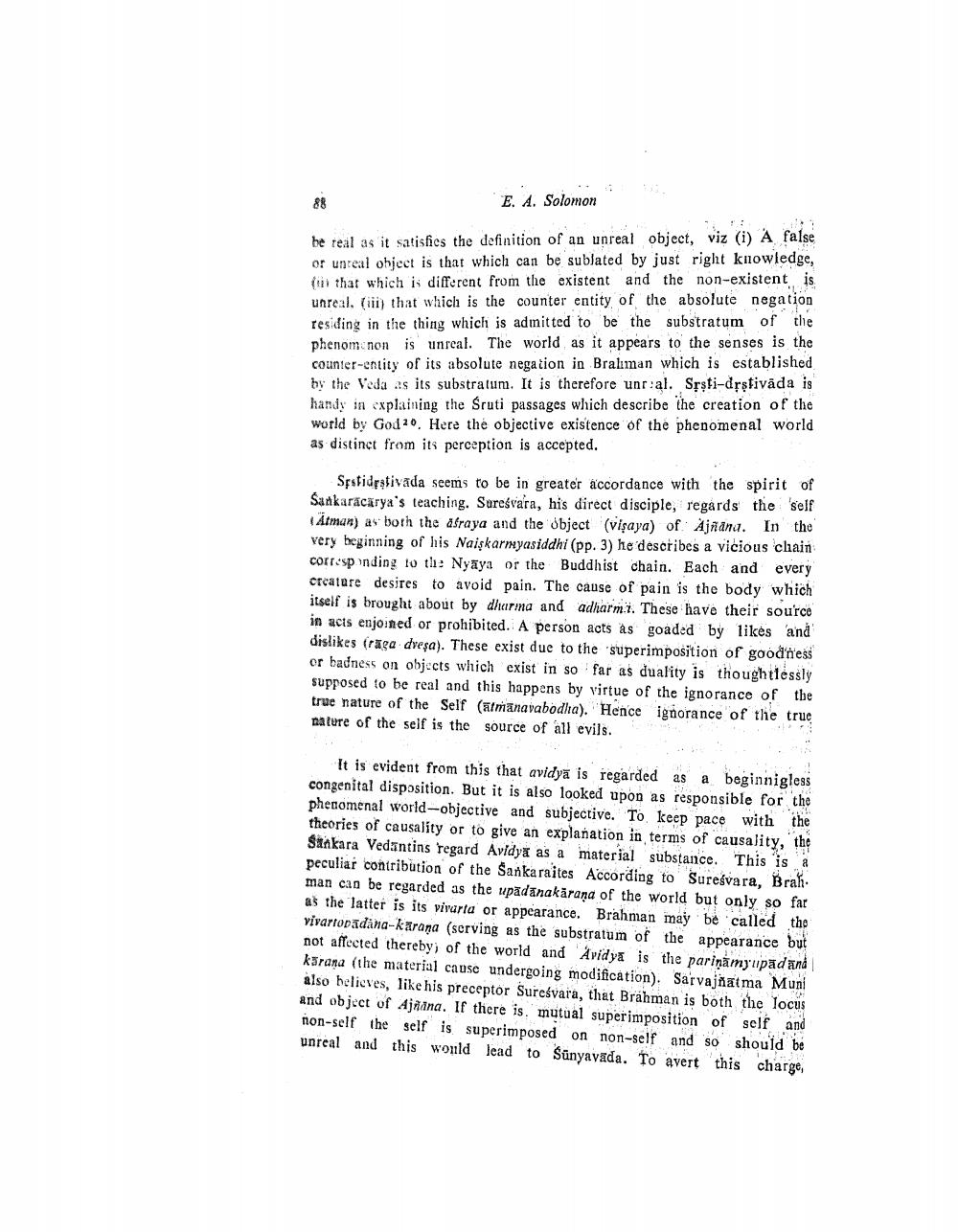________________
E. A. Solomon
he real as it satisfies the definition of an unreal object, viz (i) A false or unreal object is that which can be sublated by just right knowledge, (in that which is different from the existent and the non-existent is unreal, (iii) that which is the counter entity of the absolute negation residing in the thing which is admitted to be the substratum of the phenomenon is unreal. The world as it appears to the senses is the counter-entity of its absolute negation in Bralian which is established by the Veda as its substratum. It is therefore unr:al. Srsti-drstivada is handy in explaining the Sruti passages which describe the creation of the world by God 20. Here the objective existence of the phenomenal world as distinct from its perception is accepted.
Spstidrativada seems to be in greater accordance with the spirit of Sankaracarya's teaching. Sureśvara, his direct disciple, regards the self
Atman) as both the afraya and the object (vişaya) of Ajñana. In the very beginning of his Naiskarnyasiddhi (pp. 3) he describes a vicious cliain corresponding to th: Nyaya or the Buddhist chain. Each and every crcature desires to avoid pain. The cause of pain is the body which itself is brought about by dharma and adharm7. These have their source in acts enjoined or prohibited. A person acts as goaded by likes and dislikes (raga dveşa). These exist due to the superimposition of good'n'ess or badness on objects which exist in so far as duality is thoughtlessly supposed to be real and this happens by virtue of the ignorance of the true nature of the Self (armanavabodha). Hence ignorance of the true nature of the self is the source of all evils.
It is evident from this that avidya is regarded as a beginnigless congenital disposition. But it is also looked upon as responsible for the phenomenal world-objective and subjective. To keep pace with the theories of causality or to give an explanation in terms of causality, the Sankara Vedantins regard Avidya as a material substance. This is a peculiar contribution of the Sankaraites According to Suresvara, Brah man can be regarded as the upadanakarana of the world but only so far as the latter is its vivarta or appearance. Brahman may be called the vivartopadana-karana (serving as the substratum of the appearance but not affected thereby) of the world and Avidya is the parinămyupad and krana (the material cause undergoing modification). Sarvajñātma Muni also believes, like his preceptor Sureśvara, that Brahman is both the locus and object of Ajnana. If there is mutual superimposition of self and non-self the self is superimposed on non-self and so should be unreal and this would lead to Sūnyavada. To avert this charge,




